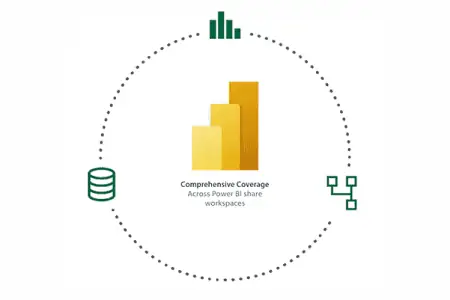
Modern Data Protection: What Is It and Why Should You Care?
Data is at the center of business. For many organizations, digital adoption drives strategy. Data is essential to meeting customer needs, responding to sudden market shifts and unforeseen events. That’s why data protection should be on your mind.
What Is Data Protection?
Data protection is the process of safeguarding important information from corruption, compromise, or loss. The importance of data protection increases as the amount of data created and stored continues to grow at unprecedented rates. There is also little tolerance for downtime that can make it impossible to access important information. Consequently, a large part of a data protection strategy is ensuring that data can be restored quickly after any corruption or loss.
Why Is Data Protection Important?
Data protection is essential, as it helps any organization prevent data breaches, exfiltration, downtime, and damage to reputation and finances. Organizations must also enforce data protection to restore lost or corrupted data and meet regulatory requirements.
For example, common data disaster scenarios can include:
- Ransomware attacks
- Cybercrime, hacking, or phishing
- Physical loss of premises (from fire, extreme weather, flooding, etc.)
- Data corruption from electrical surge or power failure
- Theft or vandalism
- Hardware or software malfunction
- Accidental file deletion
Data loss comes at a great cost. The average cost of a data breach in the United States is $8.64 million, while the average time to detect, remediate, and recover from a breach is 280 days¹.
Threats are becoming more sophisticated day by day, but the incidence of data loss caused by internal errors or accidents is not to be dismissed. Statistically, human error is still the number one cause of data breaches. A recent study published by CybSafe and the UK Information Commissioners Office found that 90% of all data breaches were caused by human error or oversight².
Principles of Data Protection
The key principles of data protection are to safeguard and ensure availability of data under all circumstances. The term data protection describes both the operational backup of data as well as business continuity/disaster recovery (BC/DR). Data protection strategies are evolving along two lines: data availability and data management.
Data availability
Data availability ensures users have the data they need to conduct business even if the data is damaged or lost. Hybrid and remote work have forced companies to adjust security protocols to ensure data is available in situations that traditional on-premises security protocols and firewalls didn’t support, like employees using poorly secured home networks. Another example is collaborating with contractors or vendors, which requires data availability on more cloud storage and applications.
Data management
Data management is the practice of storing, transmitting, maintaining, and monitoring data. This concept is crucial in developing a data protection strategy, as it defines how employees and other stakeholders work with data. With data becoming more available at the perimeters of networks, such as remote employee laptops and personal cloud applications, data management has taken on a new role. Security teams must now track data movements on these remote devices and applications and understand trends of this activity to detect and flag risky behavior that necessitates intervention.
Data Protection Technologies
Another area where data protection technologies are coming together is in the merging of backup and disaster recovery (DR) capabilities. Virtualization has played a major role here, shifting the focus from copying data at a specific point in time to continuous data protection (CDP). Historically, data backup has been about making duplicate copies of data. DR, on the other hand, has focused on how companies use backups once a disaster happens. Complete data protection is not just one or the other.
Since data protection in its entirety pertains to security, availability, and management, there are many technologies that aim to help companies accomplish these goals. These are just a few:
Backup and recovery
Backups are an essential component of your data protection strategy. They can’t prevent a breach from happening, but they will help you get back to business quickly with minimal downtime. Cloud backup is highly configurable to the needs of any type of business and provides you with secure offsite storage to ensure your backups are available and ready to deploy when needed.
Disaster recovery
DR is an organization’s ability to restore access and functionality to IT infrastructure after a disaster event, whether natural or caused by human action (or error). DR planning and strategies focus on responding to and recovering from disasters—events that disrupt or completely stop a business from operating. When it comes to creating DR strategies, you should carefully consider the following key metrics:
-
- Recovery time objective (RTO): The maximum acceptable length of time that systems and applications can be down without causing significant damage to the business. For example, some applications can be offline for an hour, while others might need to recover in minutes.
- Recovery point objective (RPO): The maximum amount of data—as measured by time—that can be lost after a recovery from a disaster, failure, or comparable event before data loss will exceed what is acceptable to an organization.
Continuous data protection
CDP is a system that backs up data on a computer system every time someone makes a change. It has come to play a key role in DR, and it enables fast restores of backup data. CDP enables organizations to roll back to the last good copy of a file or database, reducing the amount of information lost in the case of corruption or data deletion.
Replication
Data replication is not a static backup of data. Instead, data replication encompasses duplication of transactions on an ongoing basis, so that the replicate (often called a mirror) is in a consistently updated state and synchronized with the source. There are different methodologies of performing replication depending on the specific availability requirements for the data.
Archive
Data archiving moves data that is no longer actively used to a separate storage device for long-term retention. Archive data consists of older data that remains important to the organization or must be retained for future reference or regulatory compliance reasons.
Data Protection: How to Choose the Right Solution
With so many data protection solutions on the market right now, it might be a bit overwhelming to choose the right one for you. Ultimately, you need to choose a solution with the feature sets and options that best fit your data protection strategy and requirements.
Here are a few tips to help you choose wisely:
- Know what data you need to protect.
- Choose vendors that specialize in your industry niche.
- Choose vendors that integrate with your existing platform.
- Choose an established company with a good reputation and good reviews.
- Understand the plans and pricing: how much storage is included in the plan?
- Look for one that’s user-friendly, has plenty of instructions and troubleshooting available, and offers fast on-demand restores.
- Be sure you understand their customer service policies. When it comes to your data, you’ve got to know it’s being stored securely and safely.
All data protection plans involve a secure backup of your essential data that you can restore quickly in case of an emergency. Data loss happens.
To learn more, download “Modern Data Protection: What Is It and Why Should You Care?”. And if you are planning to adjust or update your data protection strategy, make sure to read our “Data Protection Buyers Guide” to ensure you choose the right solution for your requirements.
Otherwise, see how HPE and Zerto can deliver data protection to your organization.
1. IBM – “Cost of a Data Breach Report 2023”
2. Cybsafe – “Human error to blame for 9 in 10 UK cyber data breaches in 2019”
 Sarah Doherty
Sarah Doherty 

